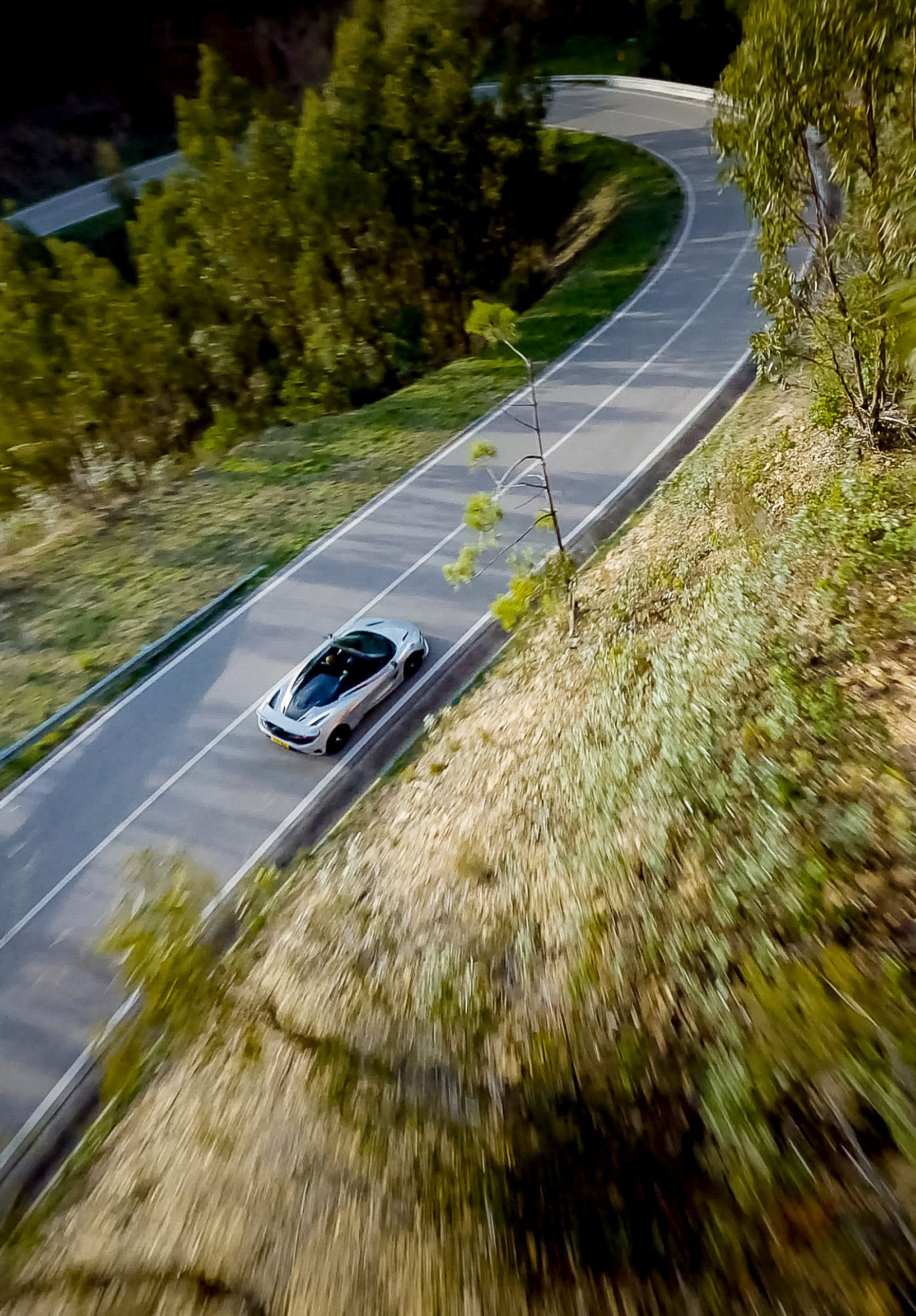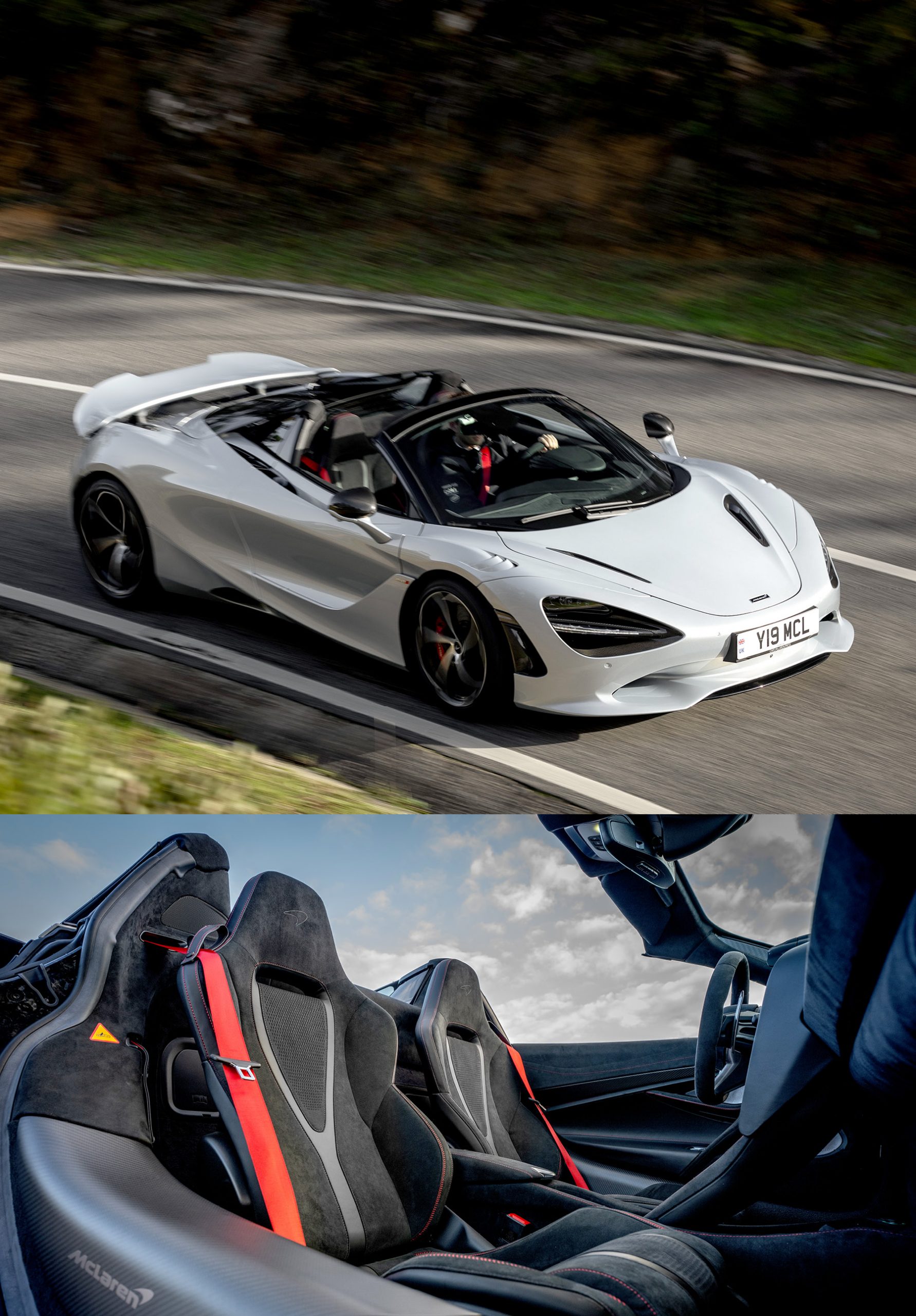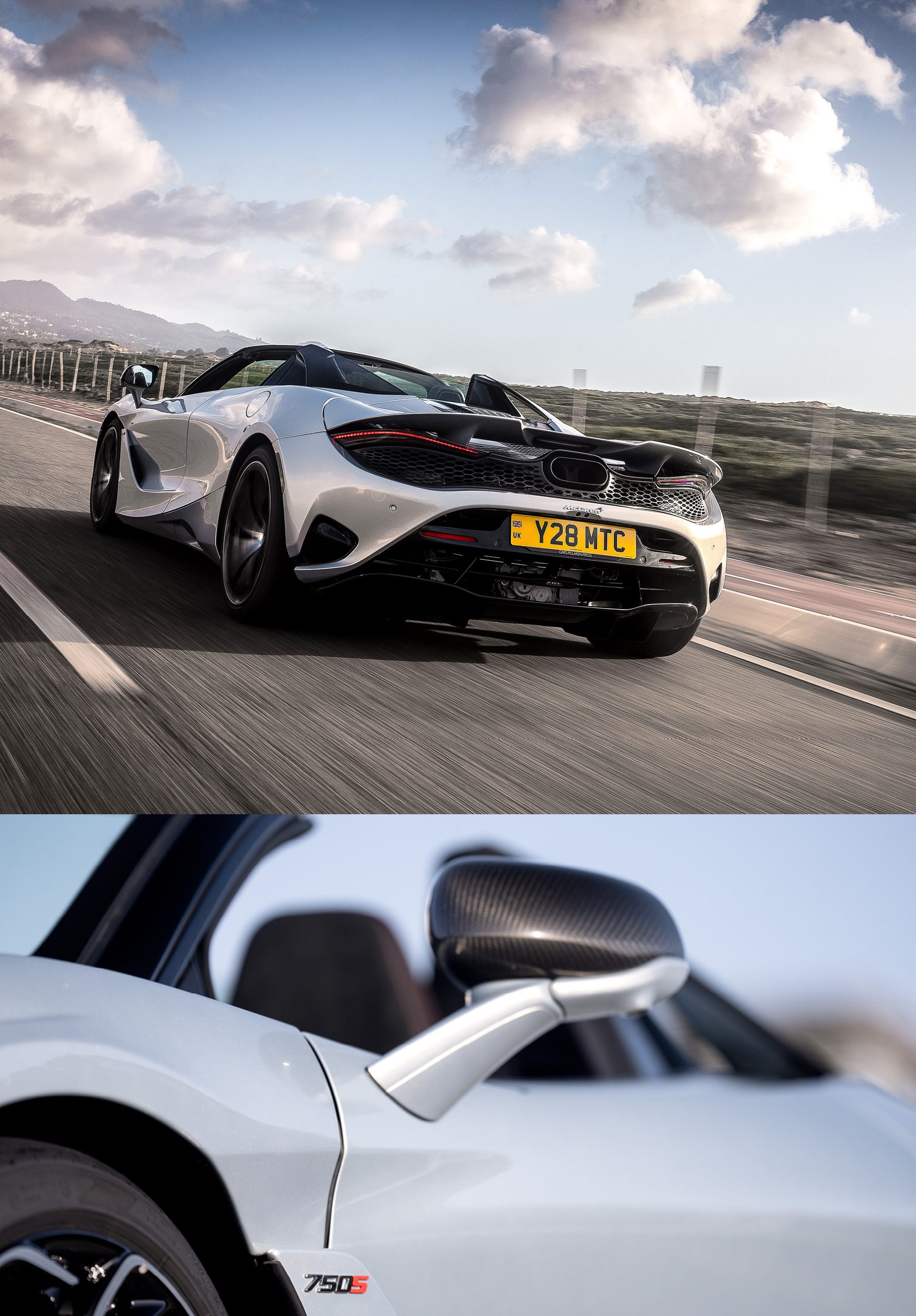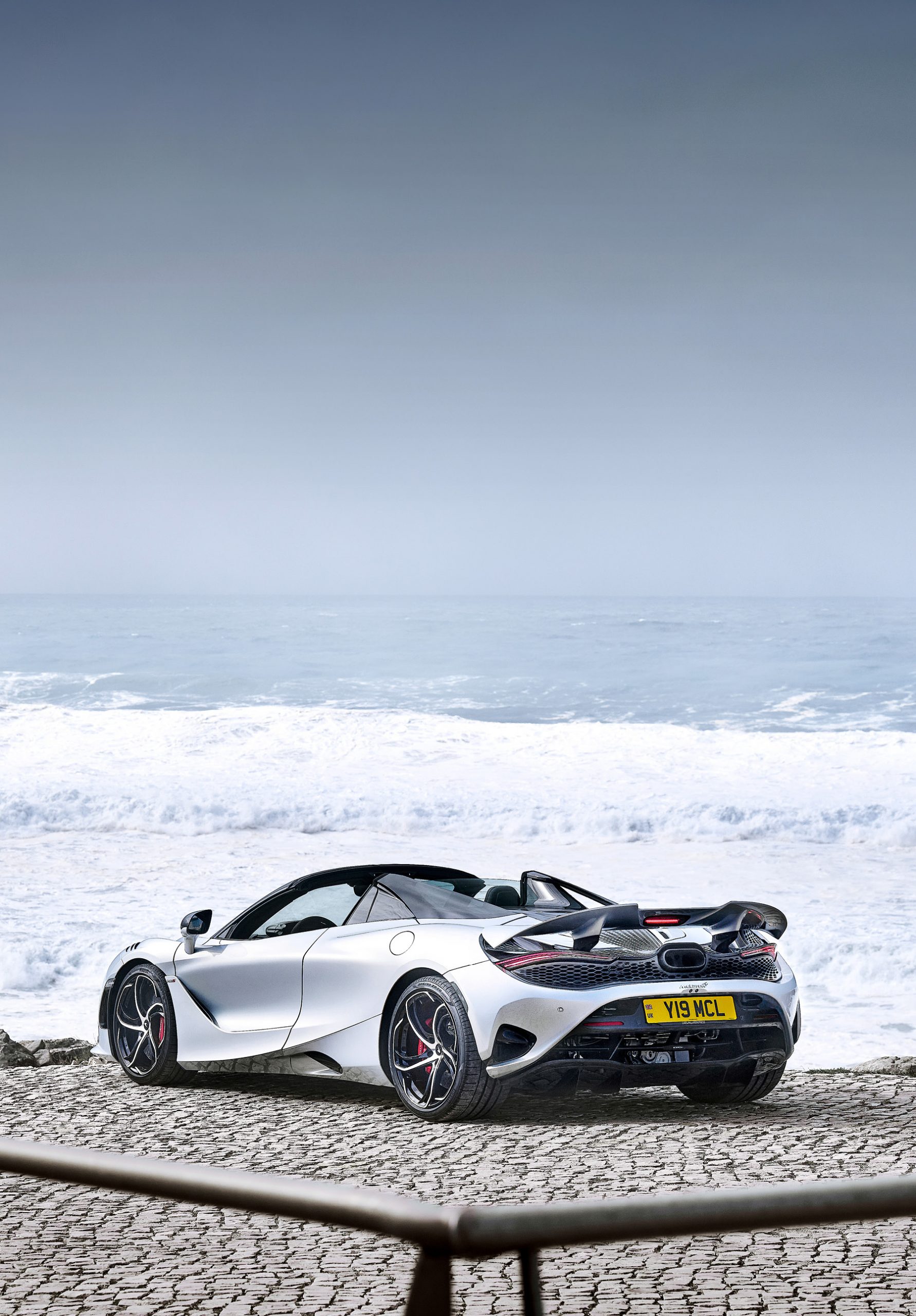Language
You can read the magazine in one of the following languages
Geolocation
You can read the global content or the content from your region

We now know that electrification is the future for the world’s supercar brands, lurking in the middle distance like some dark and ominous storm cloud, threatening uncertainty for the petroleum-powered auto industry and all who love the sound and feel of such an engine.
In fact, the electrical storm has already begun its stealthy showers.
Ferrari embraced the plug in the shape of its SF90 Stradale, the brand’s first series-production plug-in hybrid electric vehicle. McLaren, too, has the P1 and Artura, both hybrids. Even Lamborghini has turned, launching its Revuelto, powered by an electrified version (we’re talking three electric motors) of the raging bull’s fabled and fabulous petrol V12.

“There’s something quite unique about having internal combustion only.”
– Charles Sanderson
All of which makes this McLaren 750S pretty special, because the brand says that it is ‘likely’ (but also almost definitely) the last non-electrified V8 supercar it will ever be able to produce. Not because they don’t want to, but because they won’t be allowed to.
“I think that’s a likely thing, just because of the regulations globally with respect to internal combustion,” McLaren Chief Technical Officer Charles Sanderson says.
“There’s something quite unique about having internal combustion only – there’s a market for it, we enjoy it, and we think the customers love it. It’s a very pure experience.”
So if this really is farewell, then the 750S is one hell of a send-off – such a passionate love letter to the intoxicating joys of the mighty V8 engine that the mere thought of electrification sullying the experience seems sacrilegious.
The engine in question is a 4.0-liter bi-turbo V8 producing an astonishing 552 kilowatts and 800 Newton-meters (seriously, read those numbers again, they’re insane), which it channels through a seven-speed dual-clutch automatic that thumps you in the spine like an angry donkey every time you shift.
It forms the heart of McLaren’s new apex predator, with the 750S a direct replacement for the 720S – a vehicle that genuinely redefined the performance benchmark when it launched in 2017.
This new model is an evolution, rather than a revolution, with some blink-and-you’ll-miss-them exterior updates (the exhaust exit has shifted to the center, for example, the rear wing is slightly bigger and there are new bumpers), but it’s the things you can’t see that make the biggest differences.
McLaren’s white coats have been forensic in their search for the tiniest of improvements, knowing that, if you find enough of them, the results can be epic.

The zero–100 kilometers per hour dash is dispatched in a riveting 2.8 seconds, while 200 kilometers per hour flashes by in just 7.2 seconds.
That started by stripping weight anywhere they could. The alloys are the lightest ever fitted to a series McLaren, reducing unsprung weight by almost 14 kilograms.
The rear wing isn’t just bigger, it’s also lighter, saving another 1.6 kilograms, and new suspension springs shave another two kilograms.
The carbon-fiber-backed seats are lighter, too, saving a whopping 17.5 kilograms compared to the base seats in the 720S.
Then they turned their attention to that V8 engine, squeezing out more power, and introducing shorter final gearing so the McLaren 750S feels even faster.
The zero–100 kilometers per hour dash is dispatched in a riveting 2.8 seconds, while 200 kilometers per hour flashes by in just 7.2 seconds. Want to push to 300 kilometers per hour? You’ll need just 19.8 seconds (and a solid constitution).
But the numbers only tell a part of the story. The true magic lies in the experience: visceral, engaging, engulfing theater from behind the wheel that puts the white-knuckled driver at the very center.
And it can be genuinely scary – flat-foot acceleration is so furious that the tires scrabble for grip, even past 100 kilometers per hour, and you can feel the rear end shifting left and right, sending your adrenaline spiking.

The true magic lies in the experience: visceral, engaging, engulfing theater from behind the wheel that puts the white-knuckled driver at the very center.
So it’s brutally fast, sure, but it’s also so much more.
It’s tamable, talkative. The braking force – aided by a rear wing that deploys skywards when stopping at speed to act as a giant air brake, nailing the car into the road for more stopping grip – is staggering.
Impressively, the more time you spend behind the wheel, the less intimidating it all becomes. I don’t think I’ve ever been in a car that feels so comfortable traveling at warp speed. Even as the speedometer climbs beyond 270 kilometers per hour, and as a corner looms, it all just feels part of the procedure, like you are entirely in control.
Helping to inspire that confidence is the intimate connection between car and driver and the knowledge that, should you need to stop suddenly, that auto-deploying air brake will do it so violently, it will feel like you’ve been thrust into the past.

It’s a surprisingly easy daily drive, with its comfort mode delivering exactly that.
Step away from the track and the McLaren shines just as brightly. It’s a surprisingly easy daily drive, with its comfort mode delivering exactly that, softening the important bits so you don’t rattle yourself to death on the freeway.
It’s not perfect. The seats might be light, but they can also be brutal on longer drives. I even tried one fitted with what McLaren calls ‘comfort seats’, a slightly better experience, sure, but you won’t be leaving a five-star review.
But the tiny foibles fade in the face of the McLaren’s epic abilities, with the 750S convincing even the greenest among us to cross our fingers that the inevitable tsunami of electrification stays away for just a little while longer.